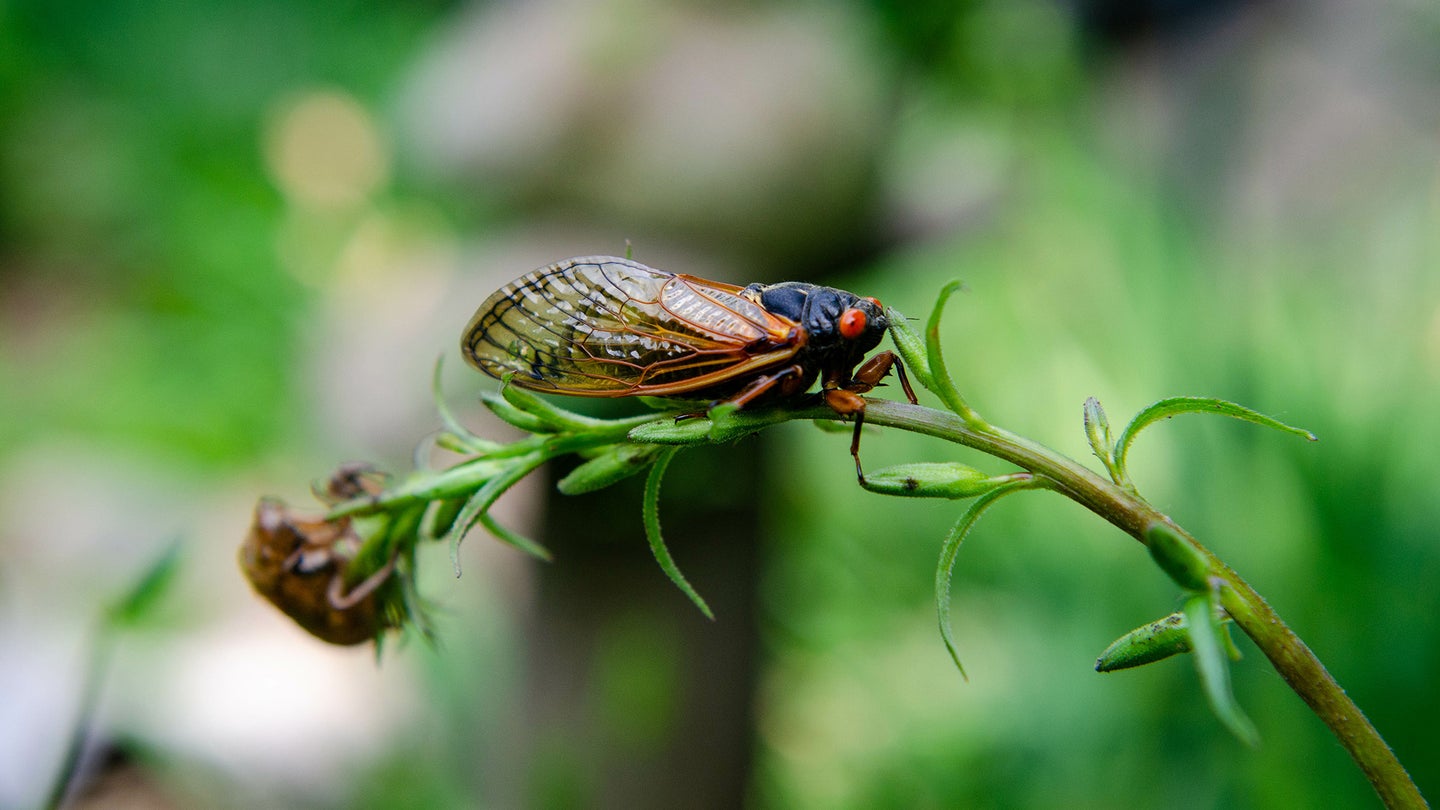Welcome to The Cicada Report

Brood XIX and Brood XIII will co-emerge in 2024 for the first time in 221 years. Tytia Habing/Stocksy
In case you haven’t heard, 2024 is a big year for cicadas. These hefty periodical bugs that are often the soundtrack to summer will be emerging in numbers that we haven’t seen in 221 years. And if you live in the Southeast or Midwest—or are planning a trip there—the next month and a half has the potential to offer some of the most exciting and aggressive topwater action you’ve ever experienced.
To help you take full advantage, we’ve decided to provide a one-stop spot for information, tips, and reports as the bugs continue to emerge. In the following weeks, we will publish a series of stories about where the cicada hatch is popping off, what fly patterns and lures to use, fishing tactics, and how to target a number of different fish species with these bugs in mind. But first, let’s break down why the 2024 cicada hatch is so special and what you can expect. Welcome to The Cicada Report.
Big brown trout like this will gorge on cicada flies. Nick Boehme
Everything You Need to Know About the 2024 Cicada Hatch
Cicadas are periodical bugs that emerge in cyclical patterns. This year, Brood XIII, which runs on a 17-year life cycle, and Brood XIX, which runs on a 13-year life cycle, will co-emerge for the first time in over two centuries. Brood XIX, also known as the Great Southern Brood, is the largest periodical cicada brood in the world, too. All of that adds up to the most epic cicada hatch any of us will see in our lifetimes.
When it comes to cicadas, every angler wants to know two things: when and where will the bugs emerge? Earlier this spring, I spoke with entomologist and biology professor at the University of North Georgia, Evan Lampert. He said that states like Louisiana, Mississippi, and Alabama should be the first to see bugs around late April. Once the first cicada emerges in a particular area, they should continue to hatch for about five to six weeks. If you haven’t seen bugs in those states yet, it should be any day now.
It’s also important to note that one of the main triggers of the hatch is ground temperature—64 degrees Fahrenheit, to be exact. This means that The Great Southern Brood (Brood XIX) will emerge first in the most southern states of the brood’s range due to the warmer climate. As spring continues and temperatures warm, the hatch will move north, eventually making its way into the Midwest, where The Northern Illinois Brood (Brood XIII) will emerge.
Fishing The Cicada Hatch
No matter where you end up fishing, there will be a few similarities. Big groups of cicadas will emerge from the ground—especially along river banks and edges of other water bodies—take to the air, sing that familiar whining buzz, and fall into rivers, ponds, and lakes in large numbers. That’s when the the fun begins. Trout, bass, carp, bowfin, pike, walleye, and any other freshwater predatory fish species you can think of will be gorging themselves on these big bugs. So, target your favorite fish by all means, but don’t get so focused on that one species that you miss out on other exciting action.
If you think traditional dry fly fishing is fun, just wait until you see a trout or bass destroy a cicada fly. That said, fly fishing isn’t the only way to take advantage of the cicada hatch. There are plenty of cicada topwater hardbaits for conventional anglers to get in on the fun as well. Plus, you can cast flies from a spinning rod with the help of a casting bubble. Either method can produce lights-out action in the thick of a cicada feeding frenzy.
Smallmouth bass are a popular target for cicada anglers, both in rivers and in lakes. Max Inchausti
Stay Tuned
It is difficult to predict what exact waters will see the most bugs and fish the best, but don’t worry—we are on the case. Author and cicada fishing guru Dave Zielinski is currently chasing the hatch and, over the next few weeks, will report from the field about bug numbers, fish behavior, and what techniques are working for him. Zielinski is our cicada insider, and you’ll want to hear what he has to say throughout the spring and early summer.
In the meantime, be sure to check back in to The Cicada Report throughout the next month to read about the best cicada fly patterns, see instructional tying videos, and learn cicada-specific fishing tactics. You won’t want to miss it. After all, a hatch like this only happens once every 221 years.
The post Welcome to The Cicada Report appeared first on Field & Stream.
Articles may contain affiliate links which enable us to share in the revenue of any purchases made.
